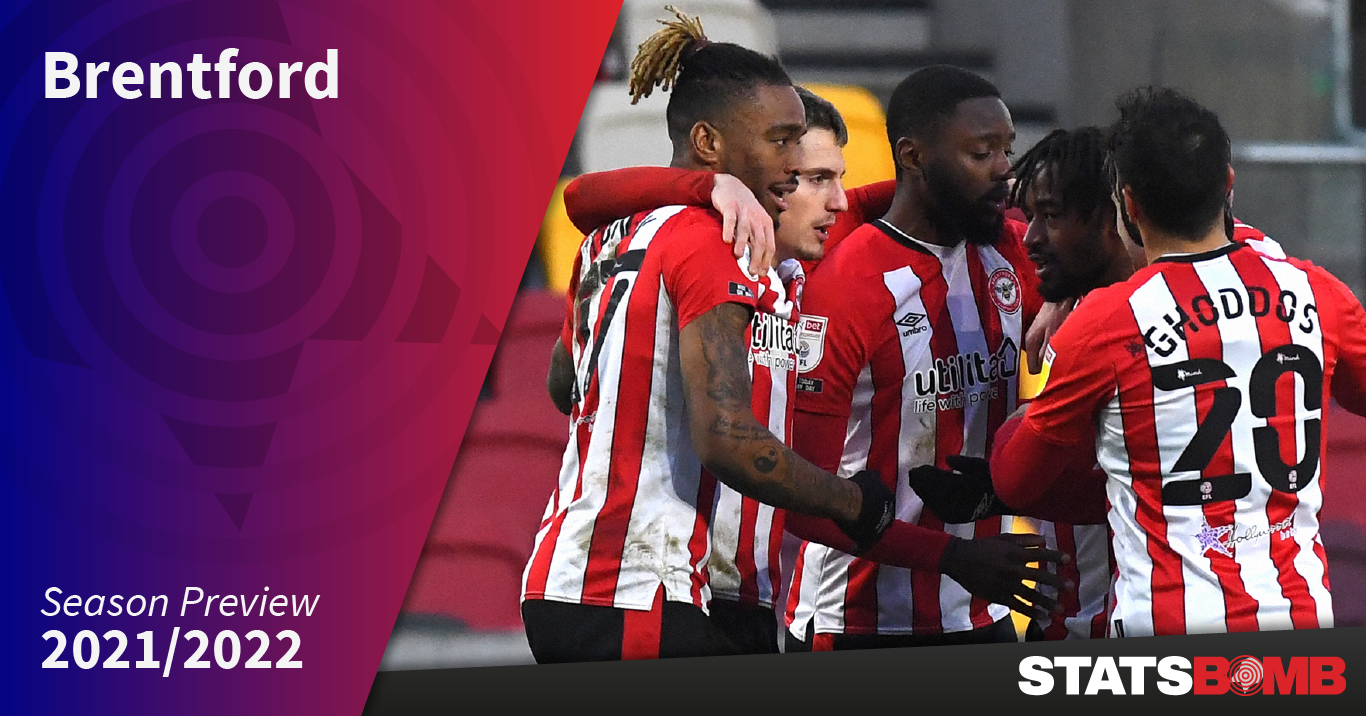There was a point in the last couple of seasons where Brentford’s eventual promotion to the Premier League upgraded from a strong possibility to a complete inevitability. Pedants will point to 4:55 pm on 29th May 2021, the moment Chris Kavanagh put the whistle to his lips to bring the curtain down on the play-off final victory over Swansea, but for many the realisation came months, if not years, earlier.
How many times have we seen Brentford lose a vital member of their squad over the last few seasons?
Players regarded as some of the best the Championship had to offer, let alone the Brentford XI, whose departures unquestionably weakened the squad? The names roll off the tongue: Gray, Tarkowski, Hogan, Woods, Colin, Jota, Egan, Mepham, Konsa, Maupay, Benrahma, Watkins. Each were sold for millions, sometimes tens of millions of pounds, and represented a substantial loss to a team with promotion ideas.
Or at least they would’ve meant a substantial loss to other, less smart teams. But this was all part of the process for Brentford. The consistency with which the Bees would simply get harder, better, faster*, stronger (not always faster, Scott Hogan had some meeps) after selling a high-quality footballer was as impressive as it was daunting for their competition.
The funny thing about it? Brentford more or less told everyone what they were doing, and executed anyway. It’s one thing to identify an edge or three, but to then give your rivals a big clue as to what you’re up to and how you’re going about it, before gesturing a friendly wave at them in the rearview mirror as you speed past, is another. The steely bullishness of the club initially drew scorn from some quarters who turned their nose up at it early on, but scorn was soon replaced by curiosity, and curiosity soon replaced with acclaim.
The evolution towards the team they have now was an interesting road that took many seasons, and lessons were clearly learned along the way. Under Dean Smith, the team was young and volatile; wild swings in form and turbulence in results were a common trend. As Thomas Frank came in, the recruitment strategy turned towards a more rounded blend of age and experience. In the 2020/21 promotion season, the squad saw an almost perfect allocation of minutes; a sprinkling of youthful exuberance, a heavy dose of peak-age ability, and a select few wise old heads to steer the on-pitch ship.
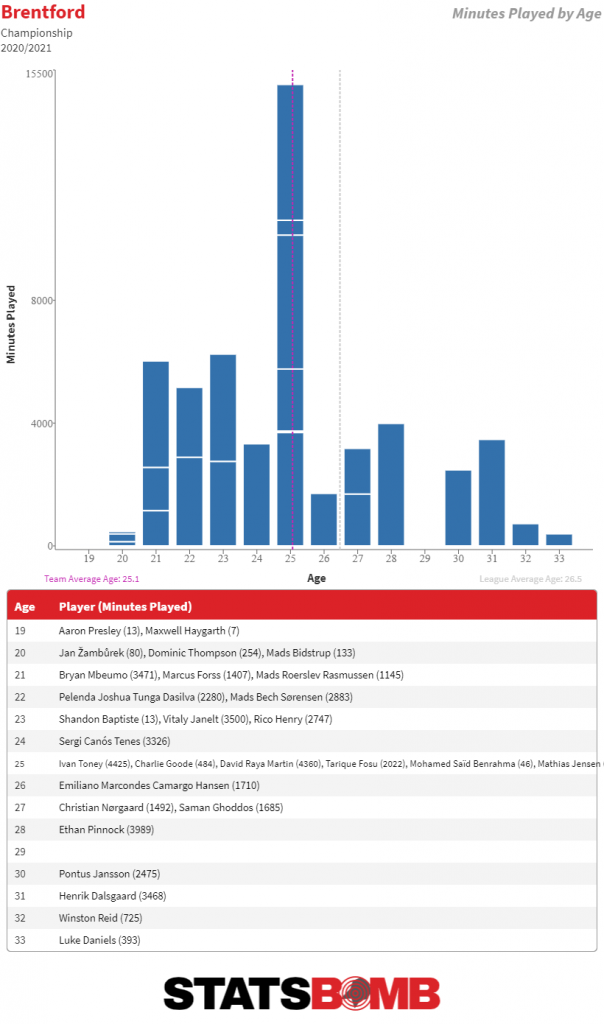
The makeup of the squad, and Thomas Frank’s tactical evolution of the side, started to steady what were previously unstable results. Brentford were prone to streaks of both positive and negative form under Dean Smith. They’d be playing great football and looking like one of the best sides in the league in one month, and the next be exposed repeatedly in defence with the team looking unbalanced towards attacking flair. Frank took a while to get his ideas across, but there’s no arguing with the process or the results in his two full seasons in charge.
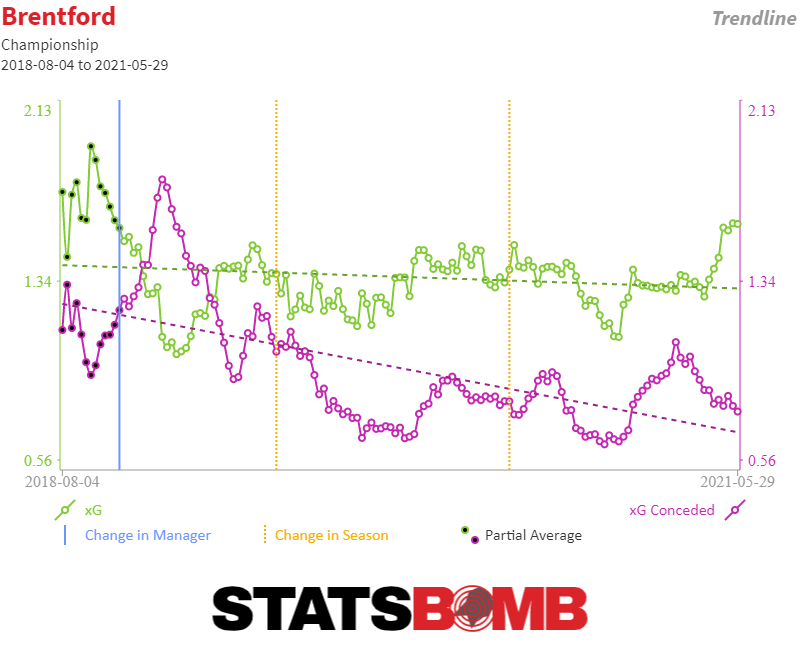
Frank was a member of the coaching staff under Smith and took over the hotseat in October 2018 when Smith departed for boyhood club Aston Villa. It created an interesting dynamic: he clearly would’ve been involved in the implementation and drilling of the game model under Smith, but also must’ve been watching with some clear ideas of his own as to how the team could improve.
There were very subtle changes in the team’s attacking output; the team became more open to crossing the ball and attacked with slightly more pace, but process and outcomes more or less remained the same.
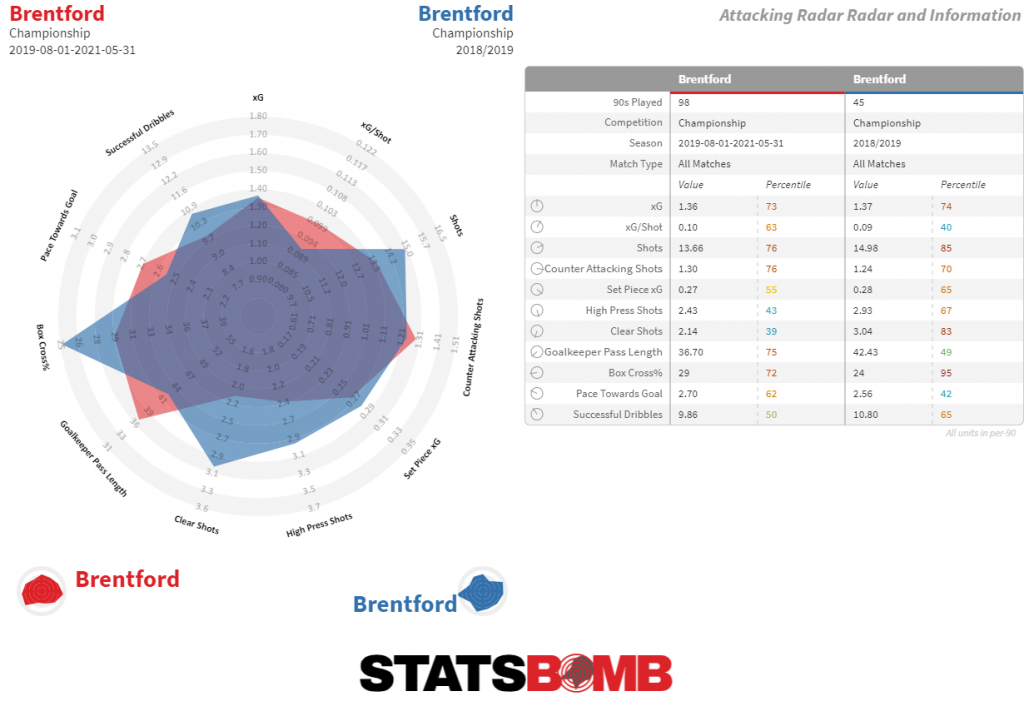
But it was on the defensive end where Frank made a huge difference and clearly demonstrated that he can coach a more effective defence than Smith, or at least the Smith that was at Brentford. Under Smith, the Bees earned a deserved reputation for playing free-flowing, attacking football in the Championship, a draw for the many talented attackers they recruited in the Matthew Benham era. But the factor that finally earned them promotion was developing a league-best defensive process. Only Leeds conceded fewer expected goals (xG) than Brentford in 2019/20--no one bettered them in 2020/21.
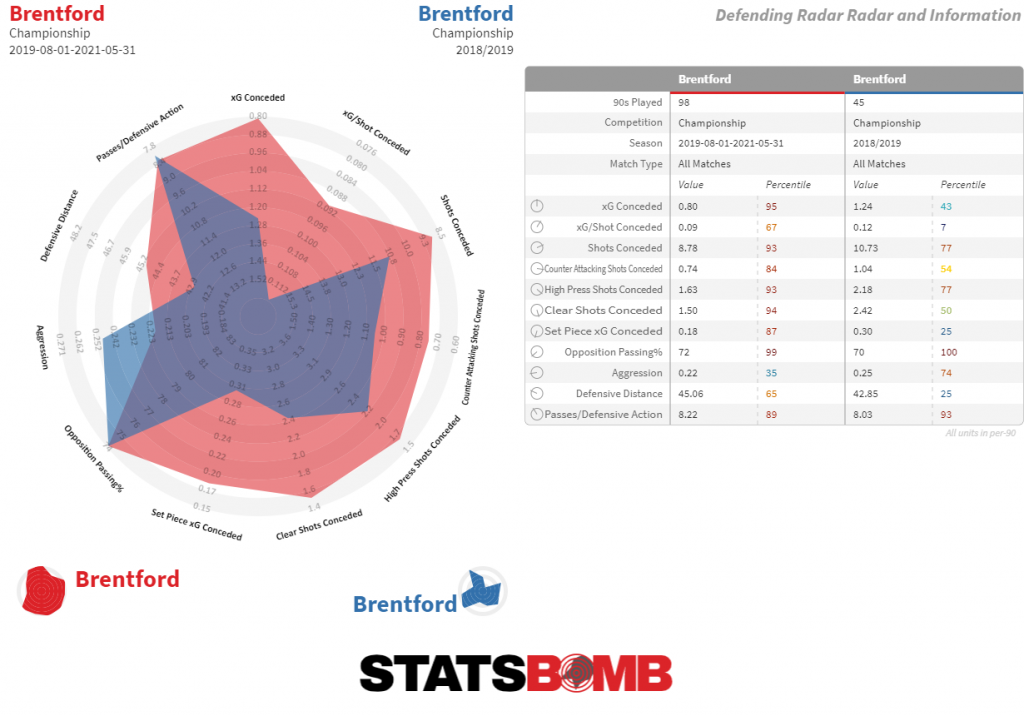
The thing about the promotion-winning Brentford side was that they were good at… well, everything. Pick a metric, Brentford were within touching distance of the top of it at both ends of the pitch. This was a team with many strengths and very few, quite honestly any, weaknesses.
| Metric (per 90 minutes) | For | Against |
| Expected Goals | 1.40 (2nd) | 0.79 (1st) |
| Shots | 13.2 (3rd) | 8.4 (1st) |
| Counter Attacking Shots | 1.1 (3rd) | 0.6 (5th) |
| High Press Shots | 2.2 (3rd) | 1.3 (4th) |
| 1 v 1 Shots* | 2.4 (2nd) | 1.3 (2nd) |
| Set-Piece Goals | 0.27 (8th) | 0.18 (5th) |
| Final Third Entries | 38.1 (7th) | 34.9 (5th) |
| Passes Inside The Box | 3.2 (2nd) | 1.6 (1st) |
*Shots with just the goalkeeper between ball and goal
They could hurt you on the counterattack, but you couldn’t hurt them back. They could press you high and turn the ball over, but they’d just play through you if you tried to do the same. They regularly created clear chances on goal, but you always found an outstretched Ethan Pinnock leg in the way when you caught a rare glimpse of the net. They’d bully you from set-pieces, but David Raya was always there to punch yours away. They found it easy to pass their way through your defensive setup and reach dangerous territory, but you’d be doing well if you completed two passes in Brentford’s penalty area in a game.
The irony won’t be lost on anyone – least of all Benham and his staff – that Brentford were automatic promotion candidates in each of the last two seasons according to the expected goals “table of justice”, but fell short on both occasions to land in a play-off spot in the real-life-football-is-played-on-grass-not-spreadsheets table. Brentford had the 2nd best expected goal difference in 2019/20 - many observers felt they deserved to go up that year - but they fell short in the last half an hour of the season, losing in play-off final extra time to Fulham.
They must’ve feared a similar outcome this season when they were again 2nd-best in the expected goals table, this time just behind Norwich, and were again favourites in the play-off final, this time against Swansea. They needn't have worried. The game could hardly have started any better to settle the nerves. An early Ivan Toney penalty ten minutes into the game, followed by a lightning-quick, smooth and slick counterattack to put them 2-0 up midway through the first half was enough to see off Swansea, who never really came within touching distance after that.
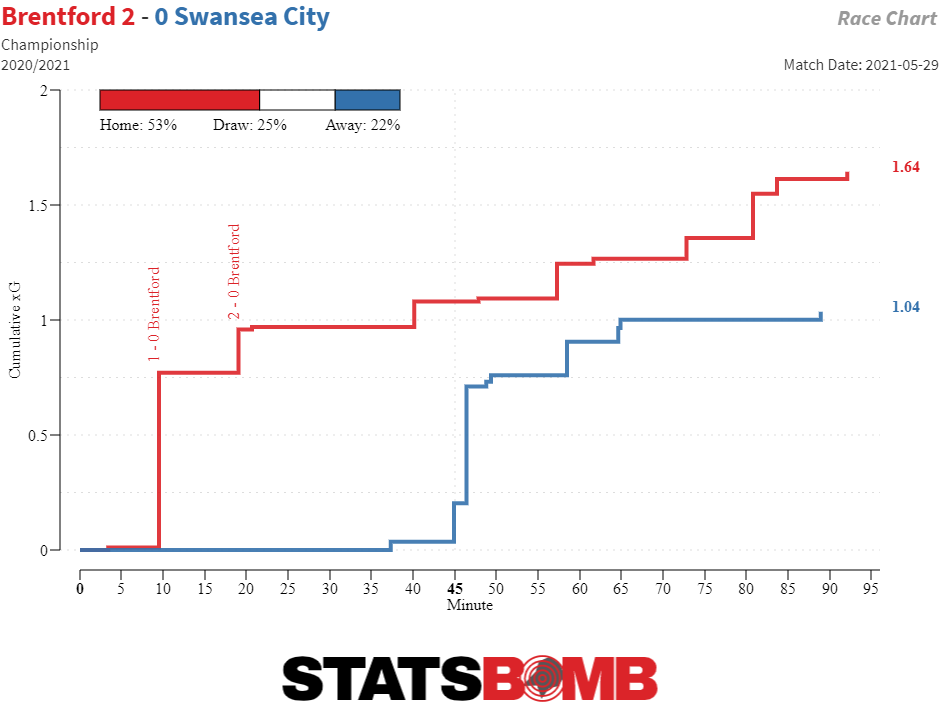
So what to expect in the Premier League? Gut instinct says that the same calm serenity that comes from the top of the club will remain, enabling Frank and his team to attack the division as they see fit, likely taking a pragmatic approach to each individual challenge; sometimes taking the game to the opponent, other times hoping to nick a draw or win with carefully selected counterattacking opportunities.
Two bits of their summer business, in particular, give strong clues as to the areas of the game they’ll be prioritising in their maiden Premier League outing. Frank Onyeka’s arrival from FC Midtjylland adds depth to the central midfield, particularly with news of Josh Dasilva’s struggles to get fit. When Dasilva broke down in February, it was clear that Brentford missed his ability to dribble the ball through the midfield, weaving through challenges as he carried the ball into the final third. Dasilva was second only to Mathias Jensen for the number of passes and carries made into the final third on a per 90 minute basis - ball progression from the middle third was an area they needed to strengthen this summer and Onyeka’s profile is not dissimilar to that of Dasilva’s.
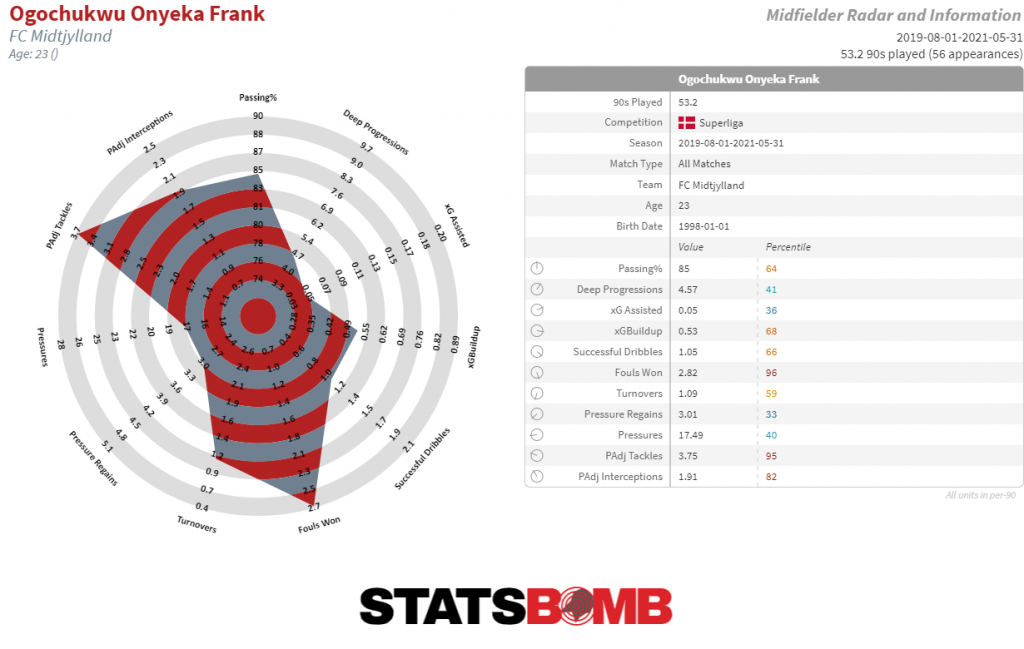
Judging by Onyeka’s profile, he’ll bring a similar ability on the ball and there are strong indicators that the 23-year-old will be able to cope with the intense pressure and physicality that comes in a Premier League midfield battle. Being able to retain the ball under pressure will be key if Brentford are to continue to play through the thirds and execute swift counterattacks. Onyeka won 2.7 fouls per 90 minutes last season (2nd amongst Danish Super Liga central midfielders) and turned the ball over just 1.3 times per game, bringing a press resistance and drive to the centre of Brentford’s midfield that’s lacking without Dasilva. It helps that Onyeka is a capable and regular contributor to the defensive side of the ball as well.
The second key signing is that of Yoane Wissa from Lorient. Wissa signs after a six-goal + four assists (not including penalties) season in Ligue 1 after establishing himself as one of Ligue 2’s best wide forwards in the two seasons prior. We all know how effective Brentford have been at shopping for the best attacking talents in Ligue 2 before – Neal Maupay and Saïd Benrahma were sold for nearly £50 million to Premier League clubs, and Bryan Mbeumo is regarded as every bit as talented as those two. Who’d bet against Wissa replicating that success, albeit at a higher level?
Wissa profiles like a goalscoring wide forward with an ability to get on the end of close-range chances in the box. His data profile is encouraging, contributing 0.40 xG & xG Assisted per 90 minutes for a side that finished 16th in the table, and in a league that has traditionally translated well to the Premier League.
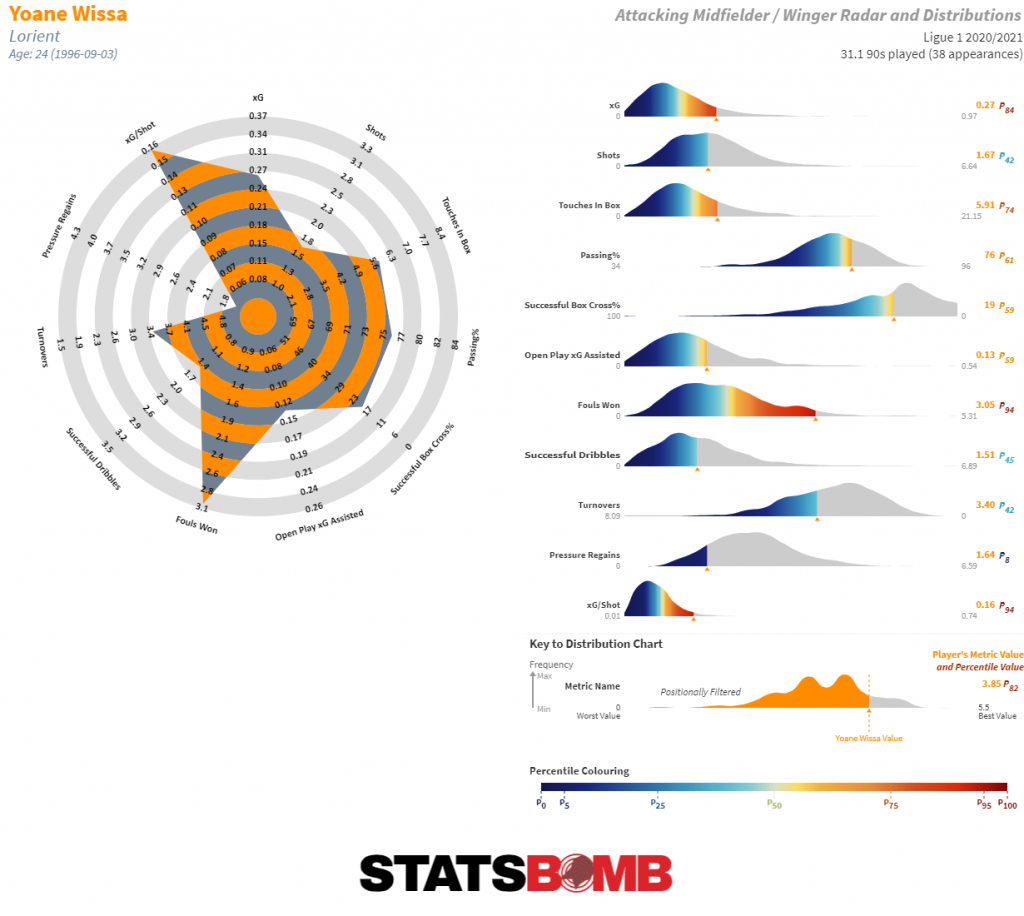
The Congolese forward clearly favours shot quality over shot quantity with an xG per shot of 0.16, meaning we could expect a goal roughy every six shots from him. It wouldn’t be a surprise to see him and 33-goal Ivan Toney battling to tap in the numerous loose balls that Brentford seem to so consistently generate around the six-yard box. Toney may not like it, but it can only be a good thing for Brentford.
What does Wissa’s profile have in common with Onyeka? Fouls won. Wissa drew 3.1 fouls per 90 last season, fourth in Ligue 1 for attacking midfielders and wingers. The prominence of both Onyeka and Wissa’s foul winning rates leads to a suspicion that this may be a deliberate ploy to draw more set-piece opportunities in a season where Brentford may have to lean on them for goalscoring chances… we will have to wait and see.
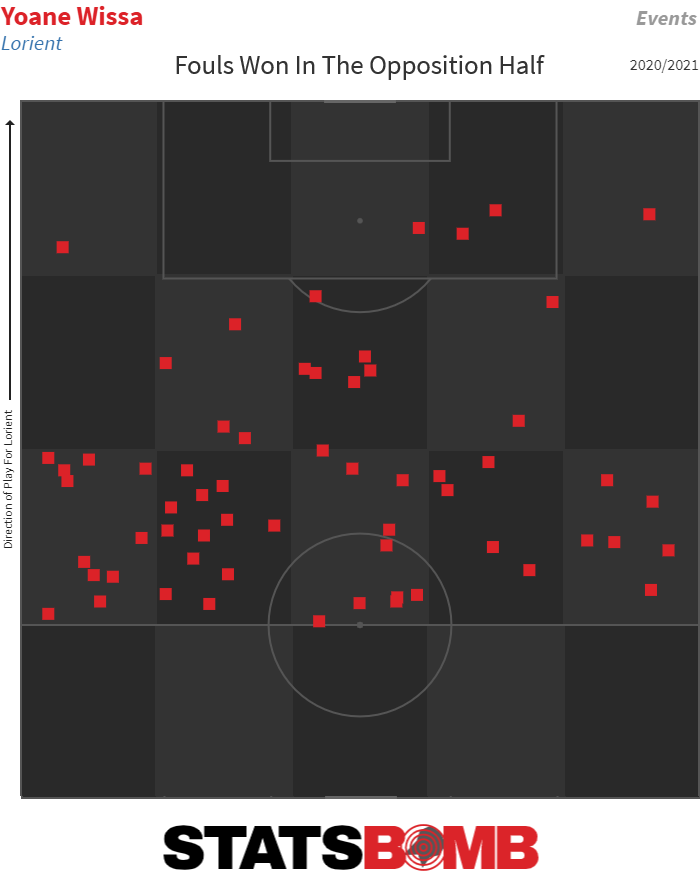
The other incoming to date is that of Kristoffer Ajer from Celtic, a move seen as something of a coup given the Norwegian has been linked with clubs much higher in the food chain than Brentford in recent seasons. After a season in which Celtic’s stock fell, Brentford took advantage to add a pacey and technical ball-playing centre back to their ranks and a player who looks like a great complement to the aerial and defensive skillsets of Pontus Jansson and Ethan Pinnock. Could Brentford’s plan A be the same 3-5-2 they deployed towards the end of last season?
Projection
Something that may surprise fans and Premier League observers is that the betting markets rate Brentford as the strongest of the three promoted sides. To those that keep an eye on these things, it’ll be less surprising—Brentford were consistently one of the promotion favourites in the Championship for several consecutive seasons before they actually got over the line. Their underlying numbers plus general reputation for being canny operators mean that the markets have a lot more confidence in them than you’d perhaps expect for a side playing top-tier football for the first time in 74 years.
The Bees will hope that there’ll be three sides worse off points-wise than them come May - their fellow promoted clubs plus Crystal Palace, Newcastle, and Burnley are seen as their main competition. Clubs that have perennially struggled at the bottom of the Premier League should be wary of the fact that Brentford now have a Premier League budget on which to execute what they’ve demonstrated time and time again is a highly effective blueprint. Even if they don’t quite pull it off, you can’t help but feel this is only the beginning of Brentford’s longer-term Premier League journey.
Want to read about another team? The rest of our Premier League season previews can be found here
If you're a club, media or gambling entity and want to know more about what StatsBomb can do for you, please contact us at Sales@StatsBomb.com
We also provide education in this area, so if this taste of football analytics sparked interest, check out our Introduction to Football Analytics course
Follow us on Twitter in English and Spanish and also on LinkedIn
